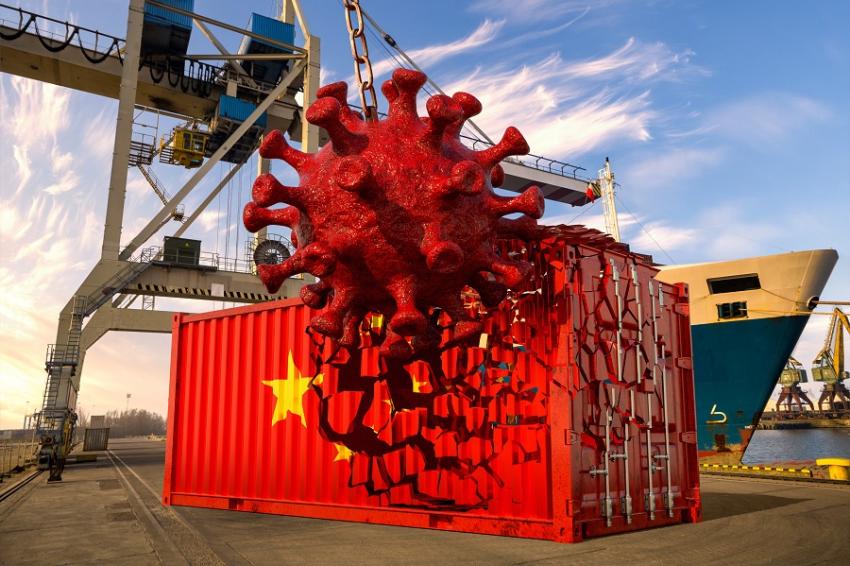How China’s Supply Chain Issues Affect the Global Chemical Industry
Environmental regulation has been tightening continuously over the past few years, and environmental performance has become a major criterion in evaluating local government officials. As a result, if in conflict with quantitative economic growth, environmental concerns now increasingly dominate. This has particularly affected many smaller chemical companies focusing on niche fine chemicals. For example, for some specific halogenated aromatics that we examined for a Western client, the number of active Chinese producers shrank from 10 to 4 within the last 4 years. To give an impression of the magnitude of the issue, in Jiangsu province – the province with the second biggest chemical production in China – about half of the chemical companies, or about 2000 entities, have been closed in recent years. As the relocation of chemical production away from cities and into chemical parks continues, further closures are likely. And while it is true that many of the fine chemicals producers that are closing down are small ones focusing on the lower end of the market and utilizing older technology, they still contribute to a significant share of China’s chemical exports. Environmental rules and enforcement has been always strict in Beijing, Shanghai, Zhejiang and Guangdong, but more radical changes, aggressive environmental performance targets and strict enforcement is observed in Hebei, Shandong, Northern Jiangsu, Henan and all along the Yangtze River.
Other trends that may to some extent contribute to the declining importance of exports for Chinese chemical companies are the dual circulation policy (essentially a government policy encouraging a stronger focus on the domestic market and less reliance on external trade) and the stronger political support for domestic development of high-end chemicals rather than the (partly export-driven) capacity buildup for volume chemicals.
But indeed, the current disruptions of chemicals exports are mostly due to anti-Covid restrictions. These restrictions affect chemical exports via a number of different pathways:
- Workforce: Most workers in areas affected areas by lockdowns (which covered about 25% of China’s total population and a higher share of the urban population) are forced to stay at home and thus unable to work in chemical plants (incidentally, as of the date of writing of this paper, one of the two authors of this paper had been under lockdown in Shanghai for nearly 80 days, though admittedly this had not had an impact on Chinese chemical production). While some factories were given special permission to work under “closed loop” conditions (the workers essentially are quarantined within the factory), even this system does not guarantee uninterrupted production due to the shutdown of suppliers and logistical issues
- Harbor capacity: In May 2022, the government reported that container throughput of the Shanghai port had recovered and reached 82.4% of the volume of April 2021. The point that a year-on-year reduction by more than 17% is regarded as a sign of recovery by the government is an indication of the severity of the situation. Across the rest of China, in early May the waiting time for export containers had increased by 22% compared to mid-March
- Trucking capacity: According to online marketplace operator Freightos, Shanghai has lost roughly 45 per cent of its trucking capacity since the end of March (partly the result of truck drivers from higher-risk areas of Covid being denied entry). Thus, the transportation of chemicals from the producers to the harbor is often the greatest bottleneck
- Concentration of chemical production in specific regions: The Greater Shanghai area (including the neighboring provinces of Jiangsu and Zhejiang) is one of the three most important producing region for export chemicals. At the same time, chemical production in China is often highly concentrated in specific regions, making these segments particularly vulnerable to even relatively local restrictions. It is less about the big, state-owned chemical companies (Sinopec, PetroChina, Sinochem, ChemChina), but more about the private-owned and provincial state-owned chemical enterprises that create the supply chain disruptions.
Of course, these issues only matter because of China’s high importance for the global chemical industry. According to CEFIC, China accounts for about 45% of the global chemical market, up from 26% in 2010. This is a far higher share than China’s contribution to global GDP of about 18%, hinting at the high importance of chemicals for China. Apart from being big, China’s chemical industry also shows strong growth – the CAGR was 8.1% for the period from 2010 to 2020 compared to a global average of 3.4% and an even lower growth in Western countries. Furthermore, as China’s global share of chemical capital spending increased from 41.6% in 2010 to 47.8% in 2020, China’s importance is likely to increase further. Consequently CEFIC expects China’s share of the global chemical market to reach 49% by 2030.
China´s 14th five-year plan (FYP) until 2025 and especially the 15th & 16th FYP until 2035 forecast a continued growth and dominance of the chemical industry, reaching about 62% global chemicals market share by 2035. The focus will shift from import substitution investments, self-sufficiency in supply and hazard free, safe operations to higher value specialty chemicals, wind and solar based energy generation, export leadership and innovative, greener products.
That said, China is not actually the biggest global exporter of chemicals – with an 8% share of global exports, it ranks below both the USA and Germany. And due to higher imports particularly of specialty chemicals, it is actually a net importer of chemicals. To understand the current supply chain issues, a slightly more differentiated analysis of the situation is thus required.
For some chemicals, China is the biggest producer but also the biggest consumer – examples being PVC, for which China’s 42% share of global production capacity is not far off its share of global PVC consumption (43%). The estimated Chinese share of global adipic acid capacity of about 50% is also probably only slightly larger than its global consumption share.
For other products such as silicon, China is a big producer (accounting for about 64% of global production) as well as a big consumer and exporter. In fact, the implementation of US president Biden’s plans to support solar energy currently clashes with the prohibition of importing materials from China as a reaction to China’s Xinjiang policy – the USA suffers from a shortage of non-Chinese silicon for solar applications. China is also both the biggest global pesticide producer producing about half of the global total, and the biggest pesticide exporter.
For quite a few chemicals, China is by far the largest global producer and produces primarily for export. For example, China is the largest producer of vitamin C, with a production market share more than 80%. For antibiotics, China’s export value in 2020 (US$3.98 bn) exceeded the value of the next four biggest countries combined (US$3.68bn, countries Switzerland, Italy, India and Belgium, source OEC). Also, it is estimated that Chinese manufacturers make around 40% of all APIs used worldwide, a value that certainly far exceeds the Chinese share of global consumption and thus indicates high exports. The same applies to some downstream products with important chemical input – for example, 90% of the global production capacity of PVC gloves comes from China, and 90% of the PVC gloves produced in China are for export.
Indeed, global reliance on supply from China is even bigger for some basic fine and specialty chemicals than for high-volume chemicals as economies of scale have increasingly shifted a major share of global production capacity to China. For example, in Europe and other parts of the world there is ample supply of polymer resins but a lack of smaller plastics components such as plastics additives and glass fiber mats. These areas that were traditionally viewed as being safe from a supply security perspective are now turning into focus. Of course, if there is no supply of additives, plastics compounding is not possible and the demand for the basic resins will also decline while customer industries such as automotive will suffer from supply shortages of compounded polymers. So, while China focuses on growth in specialty chemicals, compounders and masterbatch producers in Europe are struggling to cover their supply needs.
As a consequence of these difficulties, companies which rely on imports from China for their production are seeking ways to diminish the disruptions. Some short-term measures include diverting goods from Shanghai to other Chinese ports, including Ningbo, using rail freight rather than trucks, and ordering earlier. In the longer term, foreign businesses are considering their investments in China. This is not only true for the chemical industry, but even more so for its customer industries. Apple has just proposed boosting production in India and Vietnam in order to reduce its dependence on China, where currently more than 90% of Apple products are manufactured. Certainly, some chemical companies will follow this approach – indeed, there is substantial excitement among both Indian and selected Western producers of specialty chemicals, as they see opportunities in replacing Chinese suppliers. And given that China is unlikely to abandon its zero-Covid stance until after the Party Congress in autumn, the risk of sudden shutdowns, production suspensions, and other disruptions is likely to persist for quite some time. Not a bad time for importers of Chinese chemical companies to work on backup plans, then.
Authors:
Wolfgang Falter, Partner, ChemAdvice
Kai Pflug, CEO, Management Consulting – Chemicals










